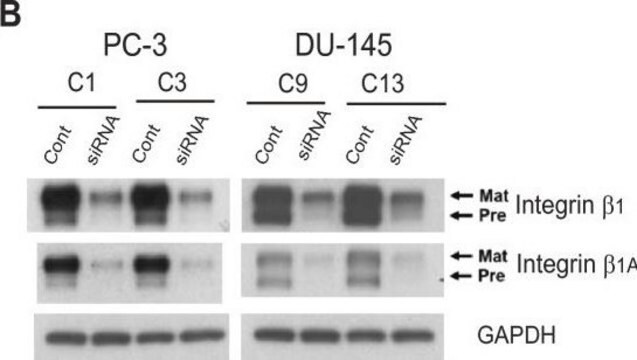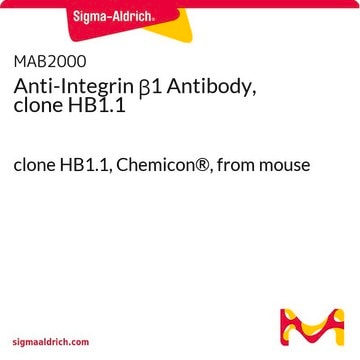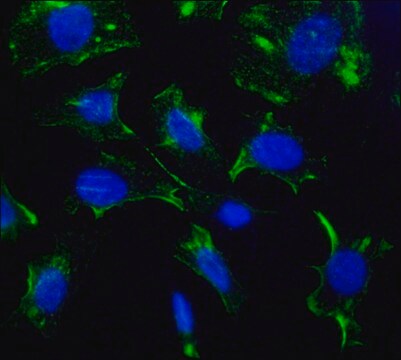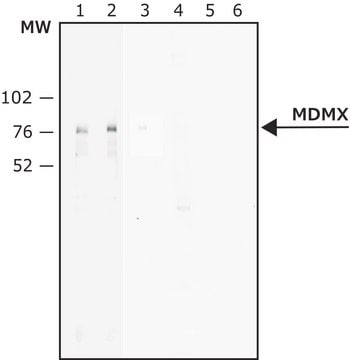MAB1965
Anti-Integrin β1 Antibody, a.a. 82-87, clone JB1A (a.k.a. J10)
ascites fluid, clone JB1A (J10), Chemicon®
Sinónimos:
CD29
About This Item
Productos recomendados
origen biológico
mouse
Nivel de calidad
100
300
forma del anticuerpo
ascites fluid
tipo de anticuerpo
primary antibodies
clon
JB1A (J10), monoclonal
reactividad de especies
human
fabricante / nombre comercial
Chemicon®
técnicas
flow cytometry: suitable
immunohistochemistry: suitable
immunoprecipitation (IP): suitable
western blot: suitable
isotipo
IgG1
Nº de acceso NCBI
Nº de acceso UniProt
Condiciones de envío
dry ice
modificación del objetivo postraduccional
unmodified
Información sobre el gen
human ... ITGB1(3688)
Descripción general
Especificidad
Inmunógeno
Aplicación
1:100 Note: epitope is trypsin sensitive; cells should be prepared with PBS + EDTA (2mM) or other non-enzymatic methods. Blocking will not occur with trypsinized cells with JB1A.
Immunoprecipitation: 1:250-500
Western blotting (reducing, 115 kDa; non-reducing, 130 kDa): 1:1000-2000
Note: binding of antibody may be inhibited by magnesium ion concentrations exceeding 0.5mM.
Immunocytochemistry/Immunohistochemistry: JB1A can be used on unfixed cells in flow cytometry and culture {Akimov, 2001; Blood 98(5):1567-1576}. Often times fixing with 2-3% PFA for 5 minutes after primary antibody incubation will assist in obtain strong signals since it fixes the primary antibodies to the tissues.
FACS: JB1A has been primarily used against live cells at 1:200-1:500 followed by goat anti-mouse conjugated secondaries
Optimal working dilutions must be determined by end user.
Cell Structure
Integrins
Descripción de destino
Forma física
Almacenamiento y estabilidad
Nota de análisis
Human lung, liver, and skeletal muscle tissues
Otras notas
Información legal
Cláusula de descargo de responsabilidad
Not finding the right product?
Try our Herramienta de selección de productos.
Opcional
Código de clase de almacenamiento
10 - Combustible liquids
Clase de riesgo para el agua (WGK)
WGK 1
Punto de inflamabilidad (°F)
Not applicable
Punto de inflamabilidad (°C)
Not applicable
Certificados de análisis (COA)
Busque Certificados de análisis (COA) introduciendo el número de lote del producto. Los números de lote se encuentran en la etiqueta del producto después de las palabras «Lot» o «Batch»
¿Ya tiene este producto?
Encuentre la documentación para los productos que ha comprado recientemente en la Biblioteca de documentos.
Nuestro equipo de científicos tiene experiencia en todas las áreas de investigación: Ciencias de la vida, Ciencia de los materiales, Síntesis química, Cromatografía, Analítica y muchas otras.
Póngase en contacto con el Servicio técnico








